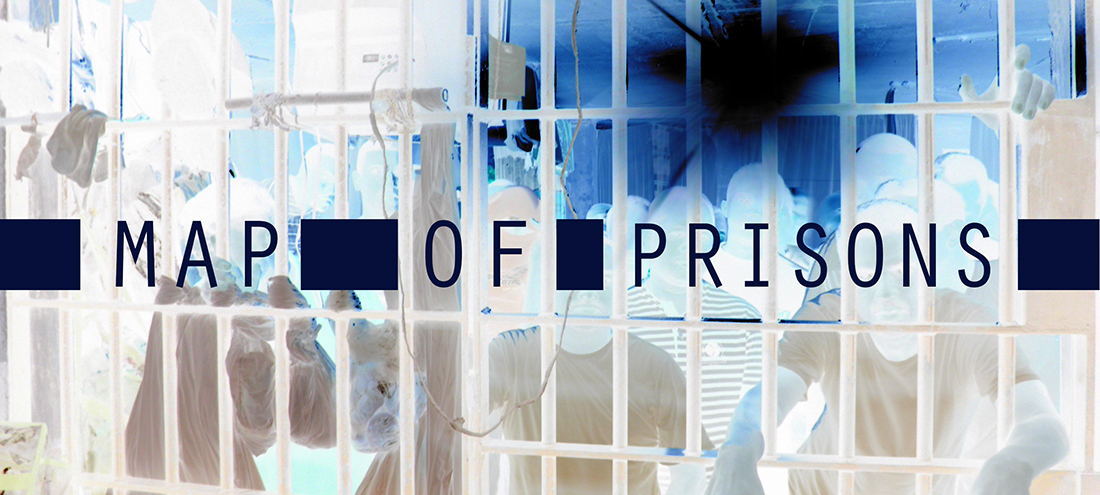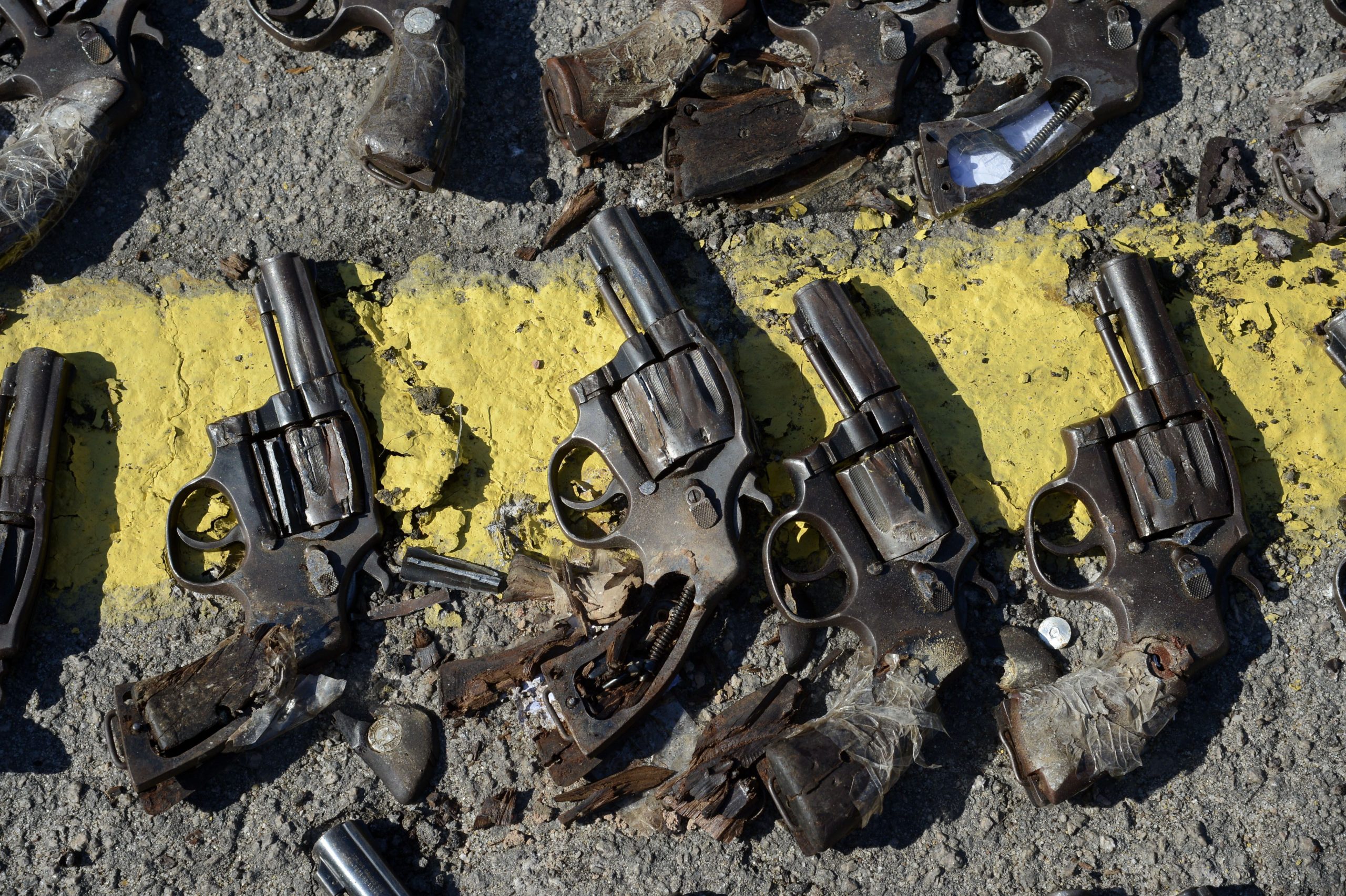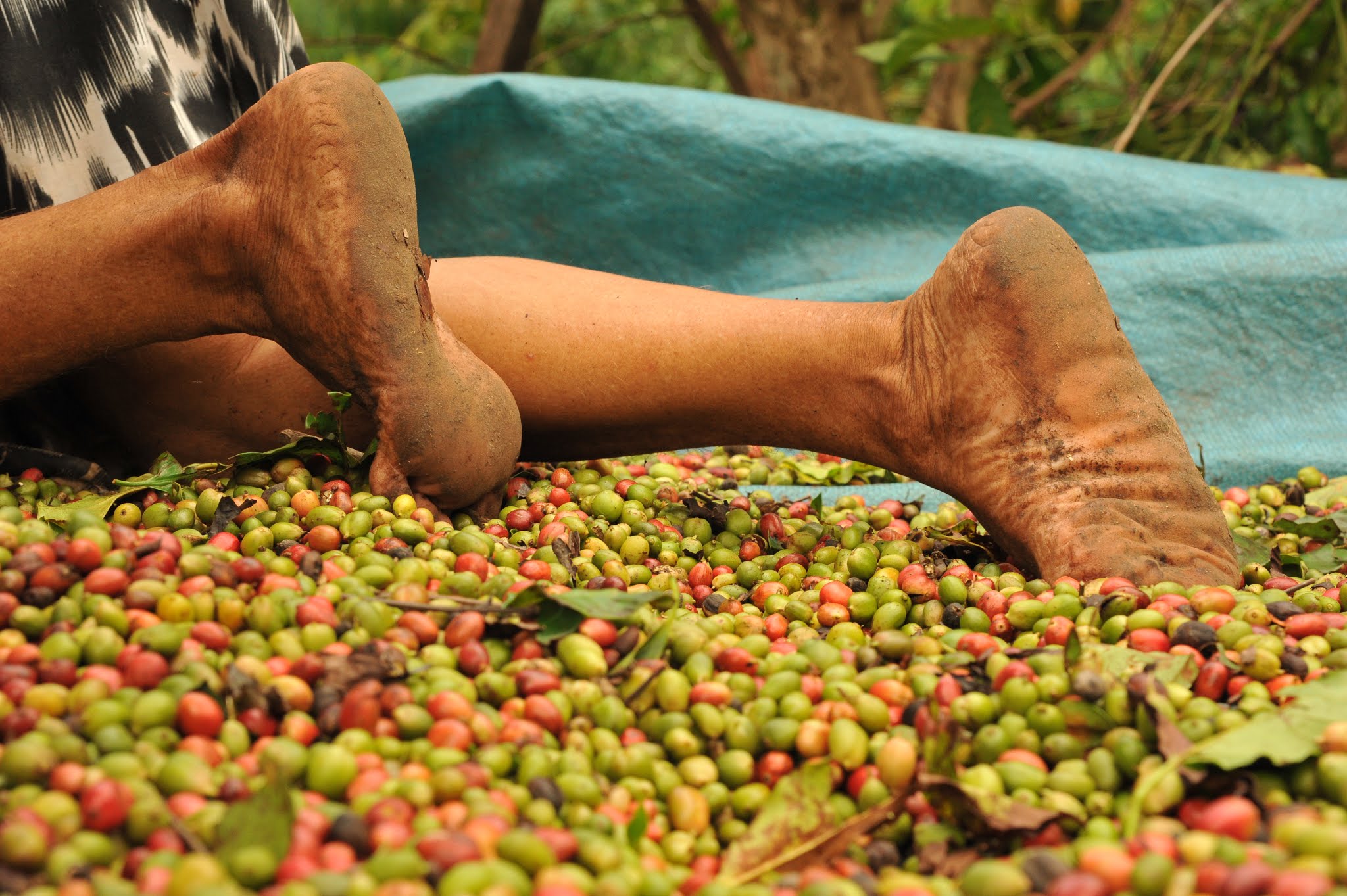Map of prisons
 OLYMPUS DIGITAL CAMERA
OLYMPUS DIGITAL CAMERA
The Ministry of Justice released this week, a year late, the most recent figures on the Brazilian prison system. The data illustrate that imprisonment has increasingly been used as the rule, and not as the exception – as determined by international human rights norms and laws. The incarceration rate, which calculates the number of prisoners per 100,000 inhabitants, has risen from 287.31 to 300.96 in just six months.
As we shall see below, in an exclusive analysis conducted by Conectas, Brazil has risen quickly in the ranking of nations with the largest prison populations. Today, it stands behind only the United States, China and Russia. Meanwhile, it fails to provide adequate access to justice. According to the new data from the Ministry, more than 43.8% of Brazilian prisoners have not been convicted of a crime. This situation is responsible for the overcrowding of prison facilities and the subsequent increase in violations against inmates. Throughout the country, there is a shortfall of 256,000 prison places.
“This is the recipe for the failure of the system: too many people are arrested, access to justice is inadequate, prison facilities become overcrowded, and the capacity to provide the proper conditions for the rehabilitation of prisoners is drastically reduced,” said the lawyer Marcos Fuchs, associate director of Conectas. “Brazil has proven to be incapable reviewing a strategy that, in recent years, has only produced violations. It’s a disgrace.”
 Map of prisons
Map of prisons
The Brazilian prison system is a black box. In addition to being all but inaccessible to civil society, prisons are politically controlled. Obtaining more detailed information about what goes on behind the walls depends, above all else, on the willingness of the wardens and the state government department responsible for the prison administration.
This prevents more thorough analysis of the system that is often described as medieval: no single piece of data is exhaustive and isolated statistics do not give an accurate picture of reality.
In an attempt to counteract this situation, Conectas will regularly publish, on this page, the most recent public data on conditions at Brazilian prisons, such as the information released this week by the Ministry of Justice. This will always be done from a critical and analytical perspective.
The objective: to paint an increasingly more complex and up-to-date picture of the situation, providing data for the debate on public security and contributing to the formulation of more appropriate solutions for the main problems of the system.
Sources
The data used by Conectas in the preparation of the graphs and tables below come primarily from the Ministry of Justice and the National Justice Council (CNJ). Other sources, such as the International Center for Prison Studies, of Kings College London, have also been used to create the map.
All the information should be treated with some reservation. The Ministry of Justice, for example, draws up its semi-annual reports based on data supplied by state governments, which are largely responsible for the administration of Brazil’s prisons. These data are not checked by the Ministry and are subject to the interpretations and stantards established by each state administration.
This leads to distortions like the one that occurred in São Paulo, where the state government started counting infirmary beds and punishment areas as prison places. The numeric – but false – effect was instantaneous: prison overcrowding in the state fell from 90% to 70% overnight. These changes in the criteria are incorporated without criticism by the Ministry in its reports. Despite these problems, the Ministry’s statistics are still the most complete and detailed that we have.
The CNJ, meanwhile, works with a different methodology, based on surveys conducted in Brazil’s Prison Sentence Enforcement Courts. The latest survey, published in June, included people under house arrest as prisoners, which caused a difference of nearly 30% in relation to the prison population reported by the Ministry of Justice. These data also need to be treated with caution, mainly because the CNJ does not specify the period covered by the reports – which are not periodic and depend, to a large extent, on information provided by the judges.
As a result of these flaws in the official data, on which the overall picture of the system and the formulation of policies are based, it is essential for the public administration, at all levels, to give more priority to the production of reliable information and clear methodologies.
Brazil vs World
The differences in the processing of data also impact the position of Brazil in the specialized global rankings. The most comprehensive, by the International Center for Prison Studies, ranks the country in 4th position, behind the United States, China and Russia.
If we consider the data from the CNJ, and not the Ministry, Brazil rises to 3rd place. This, however, is not the most appropriate comparison, since it does not consider prisoners under house arrest in the prison population of other countries.
Nevertheless, these methodological issues do not hide the evidence that Brazil is climbing rapidly up the ranking. Between 1992 and 2013, the incarceration rate (number of people in prison per 100,000 inhabitants) in the country rose by 306.7%, from 74 to 300.96. In the United States, the increase was nearly 41%. In China, it was 11%. Russia, meanwhile, was the only country in the group to report a reduction in its incarceration rate, of almost 3%.
“The increase in the incarceration rate has occurred because Brazil is not effectively applying Law of Precautionary Measures, which establishes alternatives to imprisonment (currently only permitted for sentences of up to 4 years). Another problem is that we have still not approved the law that creates detention hearings and sets a time frame of 24 hours for suspects to see a judge, in the presence of their lawyer, to analyze the need for imprisonment,” explained Marcos Fuchs. “One way of alleviating this situation would be to more frequently apply so-called restorative justice, wherein the offender is taken to scene of the crime to apologize and perform community service.”
Access to Justice
The policy of mass incarceration has, over the past 20 years, led to a 379% increase in the number of prisoners in Brazil (the country’s population grew 30% over the same period). This policy has not been accompanied by an improvement in the access to a defense and to justice. In Brazil, 43.8% of inmates are pre-trial prisoners.
“This is because the judges are quick to imprison, but there not enough lawyers in the prison sentence enforcement courts to handle this many cases,” explained Marcos Fuchs. “This can be easily observed primarily in the northern and northeastern regions of the country.” In some states, such as Amazonas, Maranhão, Piauí, Bahia, Minas Gerais and Pernambuco, the number of unconvicted prisoners exceeds 60%. It is important to point out that Conectas, unlike the Ministry of Justice, counts people held at police stations as pre-trial detainees. According to the latest figures, the civil police have more than 36,000 people in custody.
Another illustration of the lack of access to justice is the structural and financial imbalance between the three public bodies that make up the Brazilian justice system – the Public Prosecutor’s Office, the Judiciary and the Public Defender’s Office. According to a 2013 report from Anadep (National Association of Public Defenders) and Ipea (Applied Economic Research Institute), Brazil currently has 11,800 judges, 9,900 prosecutors and just 5,000 public defenders. In the district of Barra Funda, in São Paulo, for example, each public defender is responsible for 2,500 criminal cases.
Mass incarceration
Unlike what domestic laws and international norms establish, Brazil uses prison as the rule, not the exception. In September 2014, the country’s abusive use of imprisonment was criticized by the UN Working Group on Arbitrary Detention. “Public policies that are ‘tough on crime’ lead to a harsh trend of mass incarceration, while most states have neither the capacity nor the structure to deal with the consequences,” said the experts.
Since 2011, Brazil has had a Law of Precautionary Measures (Law 12,403/11), which establishes alternative measures for people facing criminal charges to prevent their imprisonment, but the new law has not been properly enforced. “It had been hoped that the number of pre-trial detainees would fall after the approval of the law, but the figures from the Ministry of Justice show the exact opposite. The Judiciary needs to understand the extent of its responsibility on this matter,” said Rafael Custódio, coordinator of the Justice program at Conectas. The data reveal that the total number of pre-trial detainees increased 107% between 2005 and 2013.
Other statistics that attract attention concern the type of crime that places the most people behind bars. Since 2005, the year the new Drug Law (11,343/2006) was passed, the number of people serving time for drug trafficking has risen 344.8%. Today, 45.6% of the women and 24% of the men in prison are there for drug crimes. In 2005, these rates stood at 24.7% and 10.3%, respectively.
Unlike what the data might suggest, this increase does not demonstrate the efficiency of the law, but instead the increased criminalization of black youth from poor neighborhoods. According to Vivian Calderoni, a lawyer for the Justice program at Conectas, “most of the people who have been sentenced to prison since 2006, on account of the new law, had no prior criminal record and were arrested with small amounts of drugs”. “The impact of the Drug Law on the female prison population is striking. In general, they are mothers, heads of households who experienced significant social vulnerability. Their imprisonment shatters this family unit,” she said.
Another fairly common reason why people are in prison in Brazil is non-violent theft. Some 14.1% of male prisoners are serving sentences for this crime. “More than 42% of detainees are in prison for non-violent crimes. This enormous contingent could receive some form of punishment other than incarceration, decongesting the prisons and facilitating the work of the State with the other inmates,” explained Custódio.
Profile of prisoners
The incarceration policies that have so quickly inflated these numbers affect a portion of the population with a very specific profile: more than 60% of detainees are black or ‘pardo’ (dark-skinned), 74% are less than 35 years old and 70% only have a primary education. The pattern is the same among men and women.
“The portrait painted by the Ministry of Justice’s data clearly illustrates the preferred target of the prison policy: young, black and poor. The prison system is selective and serves as an efficient instrument for criminalizing poverty in Brazil,” said Custódio.
Structure
Incarceration policies coupled with the non-application of alternative measures and the lack of access to justice have created a demographic timebomb: the system cannot cope with so many people. The shortfall of prison places stands at 256,000. In seven states (Alagoas, Amazonas, Amapá, Maranhão, Pernambuco, Acre and Sergipe), the shortfall is higher than the actual number of prison places.
“Overcrowding derived from the shortage of prison places and the policy of mass incarceration puts excessive pressure on the public services inside the prisons and facilitates the recruitment of inmates by the criminal gangs that run the prisons,” said Marcos Fuchs. “It is important to stress that the solution is not to build more prisons. The State ought to take an important stance and use the principle of numerus clausus, wherein an offender is only sent to prison when another is released,” he added. Paraná, which applies this principle, was one of the few states to reduce its prison population in the latest figures released by the Ministry of Justice.
Since 2005, the difference between the number of detainees and the availability of places in the Brazilian prison system has widened 131.6%. Overcrowding exacerbates the infrastructure problems at the facilities and makes it increasingly harder for sentences to be served observing the minimum standards for the proper treatment of prisoners. This can be seen, for example, in the access to healthcare, education and employment. According to the Ministry of Justice, in June 2013 there was just one general practitioner for every 1,400 prisoners and just 21 gynecologists to treat 36,000 female prisoners all over Brazil.
According to the findings of a Congressional Commission of Inquiry on the prison system, from 2009, “overcrowding is perhaps the root of all the other problems in the prison system. Overcrowded cells cause unhygienic conditions, diseases, riots, uprisings, deaths and degradation of the human person. The Inquiry found men packed into crowded cells like human waste, taking it in turns to sleep or sleeping on the toilet.”
The same desolate situation is found in access to education and employment, two of the main tools to combat recidivism (which currently stands at around 60% in Brazil, according to Unicef). In São Paulo, the state that holds 35% of the country’s prisoners, just 5.7% attend classes. The lack of provision of education contrasts with the potential demand: 56% of inmates have not completed their primary schooling. In Brazil, the rate of engagement by prisoners in educational activities is just 10.2%. Access to employment faces similar problems. Currently, only 20.8% of Brazilian prisoners perform some form of internal or external employment.
“In addition to being constitutional rights and authorized by the Prison Sentence Enforcement Law (7,210/1984), employment and education are important tools for the remission of sentences. The way it works is, for every 3 days of employment or educational activities, one day is knocked off the sentence, which contributes to the better functioning of the system,” said Custódio.
Another serious imbalance is observed in the amount of prison guards available to provide the security of the system. The number of prison guards is seven times less than the number of inmates.
Alternative sentences
Also contributing to this situation is the lack of investment by state governments in alternative sentences – measures applied to convicted offenders that allow them to serve their sentences outside prison. According to 2011 data from the Ministry of Justice, just 5% (R$4.8 million) of the budget of Funpen (National Prison Fund) was spent on support for alternative sentences and measures. “By making more funding available for the construction of prisons and much less for alternative measures, the government is promoting the idea of imprisonment at the expense of perspectives that break with the prison culture. It is a very clear message that there is no real interest in building alternatives,” said Vivian Calderoni.


